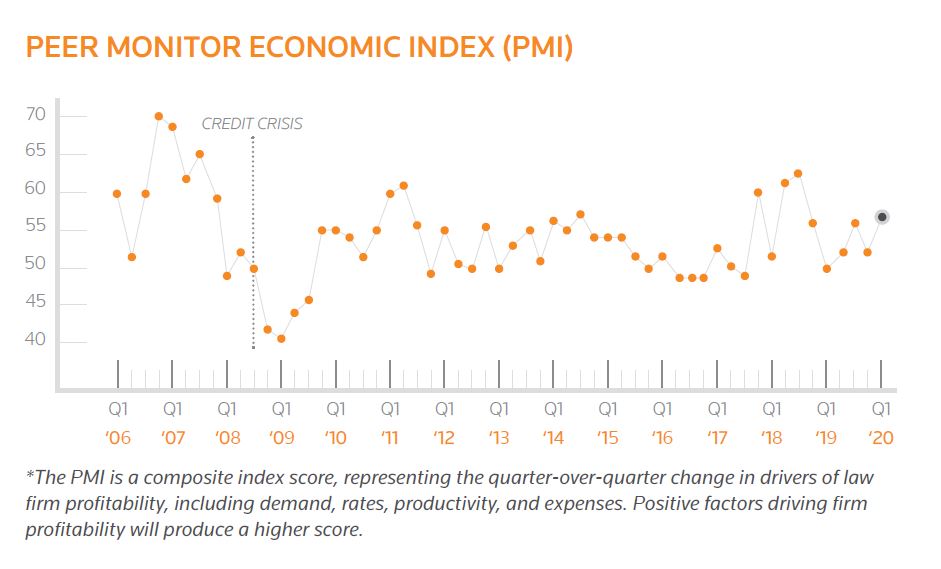The large law firm market saw strong growth in demand and rates in Q1, a strong base that stood at the onset of the COVID-19 outbreak
Looking backwards, the Q1 growth capped a string of eight consecutive quarters of either positive or flat demand growth — the first extended period of such performance since the end of the Great Recession. Moreover, it’s important to note that the bulk of the social and economic impact of the pandemic in the U.S. only began in the last few weeks of the quarter.
Due largely to these gains in demand and rates, the Thomson Reuters Peer Monitor Economic Index (PMI) rose four points to 57 in the first quarter.
Not surprisingly, productivity fell because the robust demand was not sufficient to overcome continued growth in headcount. Many law firms are already adjusting hiring plans and summer associate programs due to the current crisis, so the outlook for lawyer growth is unclear in the near term. Direct expenses rose in the first quarter, owing to the growth in headcount, while overhead expenses fell.
You can download a full copy of the Q1 2020 PMI report here.
“While law firms are currently trying to come to grips with the COVID-19 situation, the market is coming off of a strong base,” says Mike Abbott, vice president in Market Insights and Thought Leadership at Thomson Reuters. “Significant changes are taking place at many firms.” For example, law firm operations are adjusting to accommodate work-from-home and office closures; many clients are dealing with disruptions in their business; and court closures are causing delays in hearings, Abbott explains.
“Most of these changes did not start coming into effect until mid-March,” he adds. “The full impact will become more apparent in subsequent quarters.”
Based on what happened in previous economic downturns, demand for legal services will shift among various practices as clients’ needs change, says Abbott, adding that law firms will examine all aspects of their operations to maximize efficiency, keep costs under control, and ensure they are providing maximum value to their clients. Indeed, in the first quarter, corporate work and real estate were among the strongest practices, litigation was slightly positive, and IP practices and tax work were generally lower.
“In our discussions with firms, we know that many of these changes are taking place, as firms adjust both their short-term and long-term strategies to the changing conditions,” he notes.








